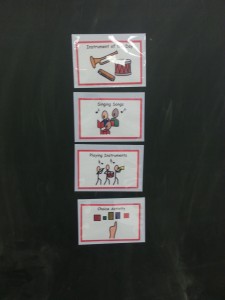I am really excited to be starting a brand-new job in September! I am leaving the world of music behind and entering the amazing world of Special Education. This has been a long time passion of mine and when the wonderful opportunity came up to open a class for students with a Developmental Disability, I jumped at the opportunity.
In preparation for my new role, I have had the pleasure of sitting through transition meetings for all of my new students which have been immensely beneficial. This was my first time sitting in on transition meetings and I am so pumped for the new school year now that I have heard all the amazing things about my wonderful new students.
Listening through the presentations, as the sending schools were sharing information with us, the ultimate goal was to make all our families feel comfortable about this big transition their child was facing. Below are a few ways that we tried very hard to make all our families feel welcome!
- All families were invited to the transition and welcomed into the meeting with smiles. Food was ready and water was available in the 30+ degree heat for all families.
- At the beginning of every meeting, parents were told explicitly that the goal of the meeting was for them to leave smiling. This reassured them that they were an important part of this process and that their voice was valued. Some parents took this opportunity to share their thoughts about the child’s needs and their anxieties about the transition. It was a great opportunity to begin to build trust between the new school and the parents.
- We had a flyer ready for every meeting inviting all of our parents to an “Ice Cream Party” in late August right before school begins. All families and students were really excited about the ice cream party idea and it was such a positive way to end every meeting. Everyone knew that they were invited to see the school, see the classroom and meet their whole teaching team.
- One of the most exciting aspects of our transition meetings for students and families was receiving some swag from the new school. A brand new Mustangs t-shirt and water bottle were a big hit with all of the families and made them feel welcome as a member of their new community. There were lots of smiles and excitement at the thought of their child wearing them.
The transition meetings were also an important forum for sharing information. If you are doing the transition meeting for the first time this year or next year, after listening to some very talented teachers present their students, this is what I saw this week that was very helpful.
- Bring pictures of the child and important items in the room. One of the teachers gave me a copy of a poem that really helps alleviate anxiety about making mistakes that she uses with one of my students. I will use this familiar item to help my student transition from one school to the next as it will be so familiar to her. Also, the pictures of my students doing his or her favourite things also started to give me an idea of my student’s interests and likes. It was great to put a picture to a name from the beginning. Families smiled when they saw their child doing all these wonderful things and it set a really positive tone for the meeting.
- Be specific and detailed about needs in the area of toileting and eating. Some forms do not have a specific section for both of these items so it is important that you are clear and detailed. It is important for the incoming school to fully know the routine so that we can replicate it on the first day of school.
- Be detailed about strategies that work to aid in positive behaviour. It might feel a little bit obvious but it is important information to share.
- Be sure to bring a copy of the IEP, transition form and behaviour plans. All of this information is highly beneficial in purchasing items needed and preparing a beneficial program for students.
Hope these ideas help you set up amazing transition meetings at your schools!

